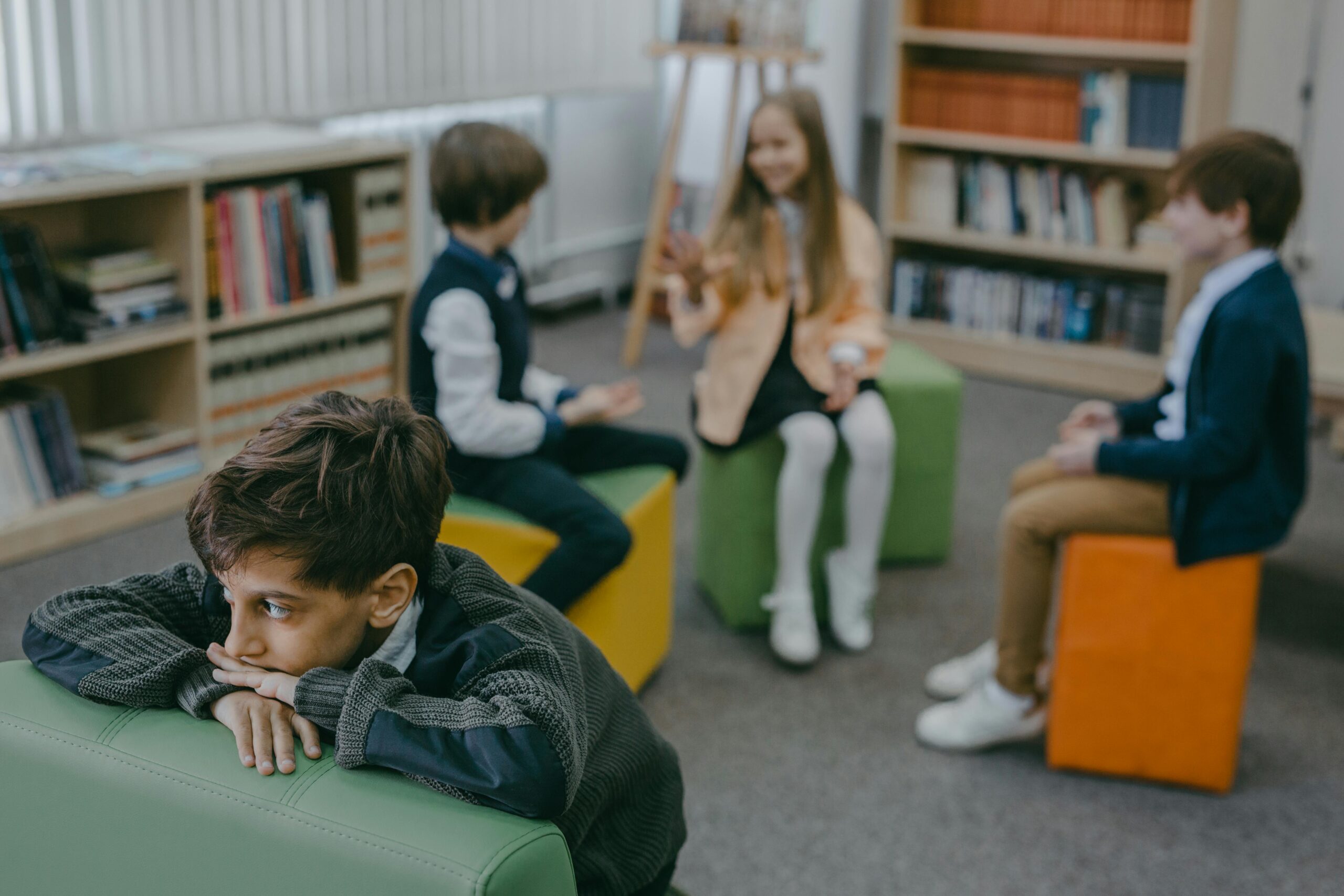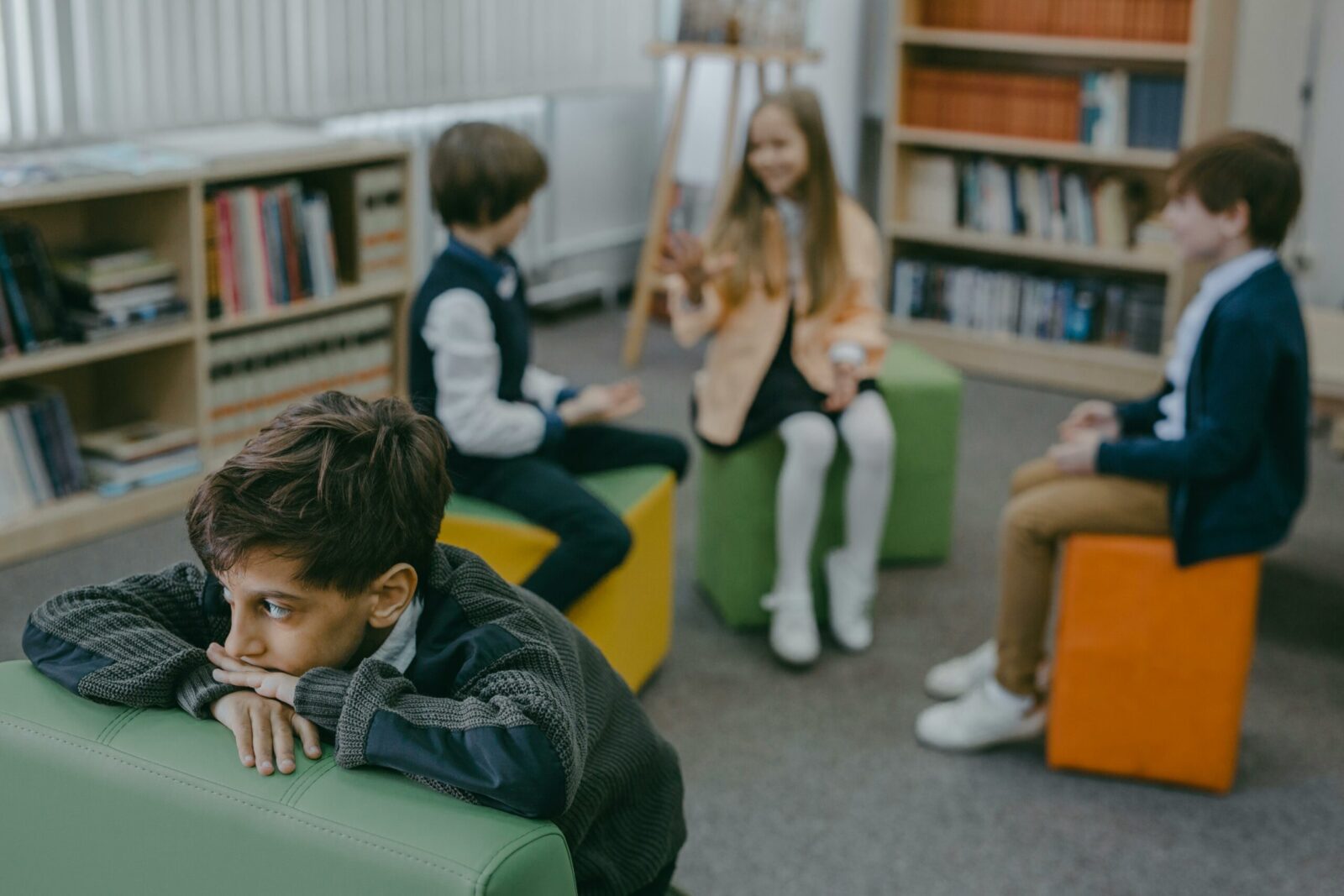Bullying is very common among children and young people. It’s found in every culture and occurs wherever there are groups of people below a certain level of social skills development. Peak occurrences of bullying tend to occur around the age of fourteen.
Being bullied can be traumatic and affect a child’s developing self-worth, emotions and attitude to school. The long-term effects of bullying include higher levels of depression, loneliness, generalised and social anxiety. It can also decrease someone’s sense of self-worth. An interesting fact about bullying is that those who bully tend to have also been negatively impacted by it.
When children are bullied, they usually hide it from their parents or teachers. It can take some time before the important adults in their lives learn what is going on. It’s extremely important that everyone stays vigilant and attempts to take a preventative approach to prevent children from bullying and experience being bullied. Most schools in Australia are engaged in this process and have implemented a “no tolerance” to bullying policy.
Types of bullying
Bullying is a specific form of aggression. It involves an imbalance of power where one person repeatedly and intentionally causes harm to someone else (who is generally in a weaker position of power).
Bullying is very different to conflict. ‘Power’ and ‘time’ are two factors that differentiate the two. When a person (or group of people) bullies, they typically hold more power, either physically or socially, over the person experiencing the bullying. Additionally, bullying happens repeatedly, over a period and is not one occurrence of harm.

Bullying is a behaviour that’s intended to cause or threaten harm (either emotional or physical) to another person. It can range from verbal teasing to using physical acts of violence. Here are some of the different types of bullying that people may experience.
Verbal: Verbal bullying is typically comprised of teasing, insults and put downs, name calling, and spreading gossip about another person or group of people.
Social: Social bullying involves shunning, isolating someone from their peers, cutting them out of a group or turning against them.
Mental: Mental bullying is when someone uses mind-games, gaslighting or blaming techniques to get their victim in trouble.
Physical: Physical bullying looks like pinching, hitting, restraining someone, throwing things, tripping someone up, purposely knocking into or bumping/shoving someone.
Extortion: Extortion may involve demanding someone to hand over their money, or lunches/ snacks. Bullies may also force their victim to steal something for them.
Gesture: This type of bullying includes making facial expressions or using body language/ non-verbal signs or signals to hurt or upset another person.
Racial: Racial bullying is any bullying that focuses on another person/ group’s racial or cultural background.
Gender and sexual: This involves gender-based or sexual based harassment. It can involve comments about another person’s body, “slut-shaming” or homophobia.
Phone: Phone bullying can occur when someone harasses another person through phone calls, text messages, sexting or using Apps such as Snapchat, Instagram, WhatsApp.
Internet: Internet, or cyber bullying, is any bullying that occurs online, such as via social media, forums or email.
Causes of bullying
There are many reasons why people bully. Bullying can be viewed as a maladaptive or adaptive behaviour.
The maladaptive theory explains that for children who bully, they tend to experience difficult home lives. For instance, they experience or have experienced aggression, corporal punishment or even family violence. Children can learn aggressive behaviours to solve problems, usually after witnessing adults in their lives doing the same thing.
The adaptive theory explains that people bully to exhibit superior strengths and resources. Bullies believe that by behaving in a certain way, they can gain further power and social standing.
Some children bully others to gain popularity, particularly when they see other (apparently) powerful children succeeding in this way. These children may already feel bad about themselves and want to feel more powerful. Sometimes, they might bully another child to fit in.
Children who are sensitive, shy, cautious and quiet tend to be bullied more than others. They may react to bullying in ways which reward the bully, such as crying, shutting down or giving in. Bullies then become used to getting what they want and continue to bully others.
There’s no one factor that puts any child more at risk of experiencing bullying or bullying others. Bullying can happen anywhere for any number of reasons.
Effects of bullying
Some common immediate effects of being bullied include:
- Embarrassment
- Shame (which is why some children hide it from their parents)
- Low self-esteem, self-worth, and/or self-acceptance
- Anxiety
- Stomach pains, headaches
- Sleep problems, such as difficulty sleeping or nightmares
- Wetting the bed
- Refusing to go to school.
The longer-term effects of bullying can cause greater issues. Bullying that is continuous and hidden can have disastrous consequences for a person, continuing into adulthood. Those who have experienced bullying over longer stretches of time may exhibit:
- Difficulty expressing emotions
- Difficulty verbalising thoughts and feelings
- Social anxiety, generalised anxiety
- Difficulty forming relationships with others
- Very limited support networks or social isolation
- Fear of rejection, or not being accepted
- A sense of hopelessness, or helplessness
- Depression and suicidal thoughts.
Early signs that your child is being bullied
Children deal with their experiences with bullying differently. However, there may be some signs that your child might be experiencing bullying, including:
- Shyness around other children
- Difficulty expressing thoughts
- Low self-esteem
- Appearing anxious, fearful, distressed
- Trying to avoid situations where other children will be present
- Refusing to go to school
- Frequent complaints of illness: headaches, tummy aches
- Isolation, not seeming to have many close friends, spending a lot of time in their room
- Increased risk-taking.
How to respond to your child
The first step is to create an atmosphere where your child can feel like they can come to you about anything. Let them know you’re always open to hearing what they tell you and won’t get upset. You should also let them know that you won’t act without talking to them first. Children often worry that their parents might do something that will make the situation worse.
Here are some tips for responding to your child, when they feel ready to talk:
- Listen to them and be present
- Don’t jump straight into problem solving mode
- Validate their thoughts and feelings and reflect what they might be feeling back to them
- Ensure they feel heard and understood by you
- Let your child know that you want to help. They should know they don’t have to feel alone. Tell your child that they are not alone, and many children experience bullying. The fact that they are being bullied does not mean anything about them as a person and it’s not their fault.
What you can do
Once you have the full story and your child feels unburdened and less alone, you can act. It’s important to act quickly and not assume that the situation will go away on its own. When you act quickly, you’re setting an example that bullying is never acceptable.
Work with your child to brainstorm some ideas and solutions. You can create a plan together. If your plan involves direct action on your behalf, make sure that your child knows about this and can provide you with feedback.
Once you have a plan, ensure you talk to all responsible adults who are in charge and have a role in the situation. Arrange meetings with teachers or the other parents. Discuss anti-bullying policies in the school and what can be done. When consulting with the other adults in the situation, make sure that the children (bullies and the victim) are spoken to separately.
How to help your child manage bullying
Here are some ways that you can help your child if they are experiencing bullying:
- Listen openly and show them that you are listening
- If you feel your own strong reactions, keep them quiet. Stay calm
- Assure the child that the bullying is not their fault
- Ask what your child did that made them feel better or safer. Positively reinforce even tiny actions that your child took, as this was all they knew to do
- Tell your child that bullying is a problem, and it needs to be stopped
- Ask your child about their opinion about how they think the problem of bullying might be solved
- Offer suggestions. If your child is being bullied, they could:
- Tell the bully to stop in a calm clear voice, using assertiveness skills
- Try to laugh it off, which may catch the bully off guard
- If these options aren’t safe, walk away. Find an adult to help you.
- Choose a solution from all the options and help your child to try it out. Use role playing
- Practice the solution and then talk about how it went. Keep practising
- Praise your child for coping.
What works to stop bullying?
There’s been a lot of research into strategies that schools, organisations and parents can implement to stop bullying. Different approaches show varying degrees of success. The main concept to keep in mind is that bullying only takes place when the benefits outweigh the consequences. Programs such as “zero-tolerance” ask bullies to give up an advantageous behaviour without gaining anything in return — not a recipe for likely success.
Typical responses are social skills training and anger management. These have varying degrees of success but are worthwhile. Two factors have been shown to be reduce bullying. They include training parents to support their children, and disciplining / providing consequences for bullying behaviours.
Since bullying can be difficult to detect, particularly by adults, it makes disciplining this behaviour problematic. Increased efforts in identifying bullying, when it occurs, is likely to be helpful. When bullying has immediate consequences, it reduces the benefits and likelihood or re-occurrence. Therefore, increasing parental awareness of, and intolerance toward bullying can be very effective. Encourage your children’s school to send literature out to all parents, advising them what to look out for. Include some educational resources in effective discipline strategies.
Educating students on the benefits of defending victims, rather than being “bully bystanders,” has also proven very helpful.
Bullies can also be shown that pro-social strategies can be used, as an alternative to coercive strategies, to attain social standing. Using a problem-solving skills training framework can help with this. For instance, using strength and athleticism to defend a victim from a bully is a good way to display attractive qualities to each other. Doing favours for people will increase not only the child’s popularity, but the likelihood of reciprocation from their peers later.
The key to this approach is focusing on the child’s social goal of attaining popularity or social power. We’d be using a problem-solving approach to help them attain that goal. By doing this we are highlighting alternative, helpful and healthy strategies that achieve the desired benefits with far fewer costs than bullying.
If you need more support
If you’re concerned that certain behaviours in your home life are causing your child to act in an undesirable way or cause physical, psychological or emotional harm to others – please reach out. Our Family Counselling Services support families and children to navigate challenges stemming from challenging home lives.
Additionally, we offer a range of Children and Parenting programs, such as School Readiness and Child Social and Emotional Wellbeing Programs to help children and their parents to navigate bullying and the emotional impacts it can have on them. To learn more about our programs, or to get in touch with our team, please call 1300 114 397.
